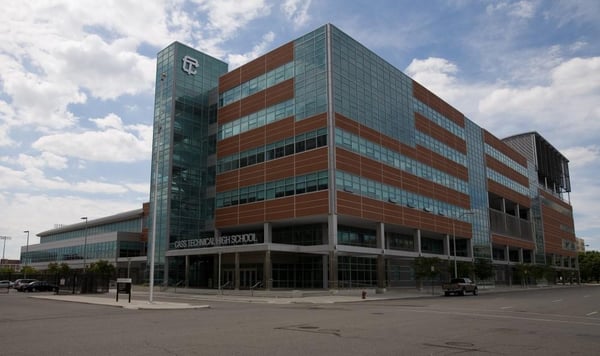2 min read
School Safety Best Practices (According to Michigan)
![]() Bobby Decker, Operations Specialist
:
December 12, 2018
Bobby Decker, Operations Specialist
:
December 12, 2018
If this is the only school safety blog you belong to, (and hey, more power to you if it isn't!) you may have missed the state of Michigan's School Safety Task Force delivering their final report and recommendations to the governor. While you may not be a "Yooper", there are still relevant details for schools nationwide in the report. Let's dig in to what they found and what it means for your school.
 This is a school in Michigan. You're going to have to trust me on this one.
This is a school in Michigan. You're going to have to trust me on this one.
The most effective strategy? Reporting.
One of the school safety strategies already in place in Michigan is their "OK2SAY" program, which provides a place for students to confidentially report bullying, suicide threats, and other suspicious behavior. In 2017, the program received around 4,600 tips, and 90% of school officials and law enforcement rated the information gained from the program as useful. 70% of school communities were previously unaware of the information coming in through OK2SAY.
The report smartly recommends that schools across Michigan train all members of their community (school employees, volunteer staff, students, parents) in the program, as well as doing more to raise awareness of OK2SAY's existence. While other safety recommendations are important as well, this sort of confidential reporting has an empirical track record in keeping schools safe. If your school doesn't have some sort of threat reporting or assessment system, it may be time to learn more.
Assess, Assess, Assess
The first, bold-letter recommendation of the task force was that schools should complete a security assessment that covers the current gaps and vulnerabilities in their safety protocols. Among other things, the assessment would happen every three years and reviews practices in emergency management, entry control, exterior security and surveillance, and traffic management.
A risk assessment like this can really help a school think through and identify areas where it can improve. It's more than just a piece of paper saying "buy surveillance cameras." These assessments can help schools allocate their resources more effectively and mitigate safety concerns before they become a real-world problem.
Make a Plan!
Unfortunately, the fact of the matter is that the wide variety of activities schools have going on every day can distract from the overarching task of school safety. Something as essential as an Emergency Operations Plan (EOP), that provides the next steps a school takes in an emergency, is sometimes pushed to the back burner. Michigan hopes to minimize this issue by requiring schools to provide their EOP that meets the core requirements early in each school year, or face diminished grants or state funds.
While we won't endorse taking a chunk out of school budgets, we know from experience how critical it is to have a plan in place BEFORE the onset of an emergency. Developing a thoughtful plan-of-action for emergencies that takes into account your school's unique situation is key, and it's what Joffe does best.
As school safety continues to be a pressing public policy need, you can expect to see more of these reports across all levels of government. They won't be magic wands. The hard work of school safety is most effectively done on the individual school level, with a community united around a shared goal: Ensuring that your school is empowered and ready for anything.

